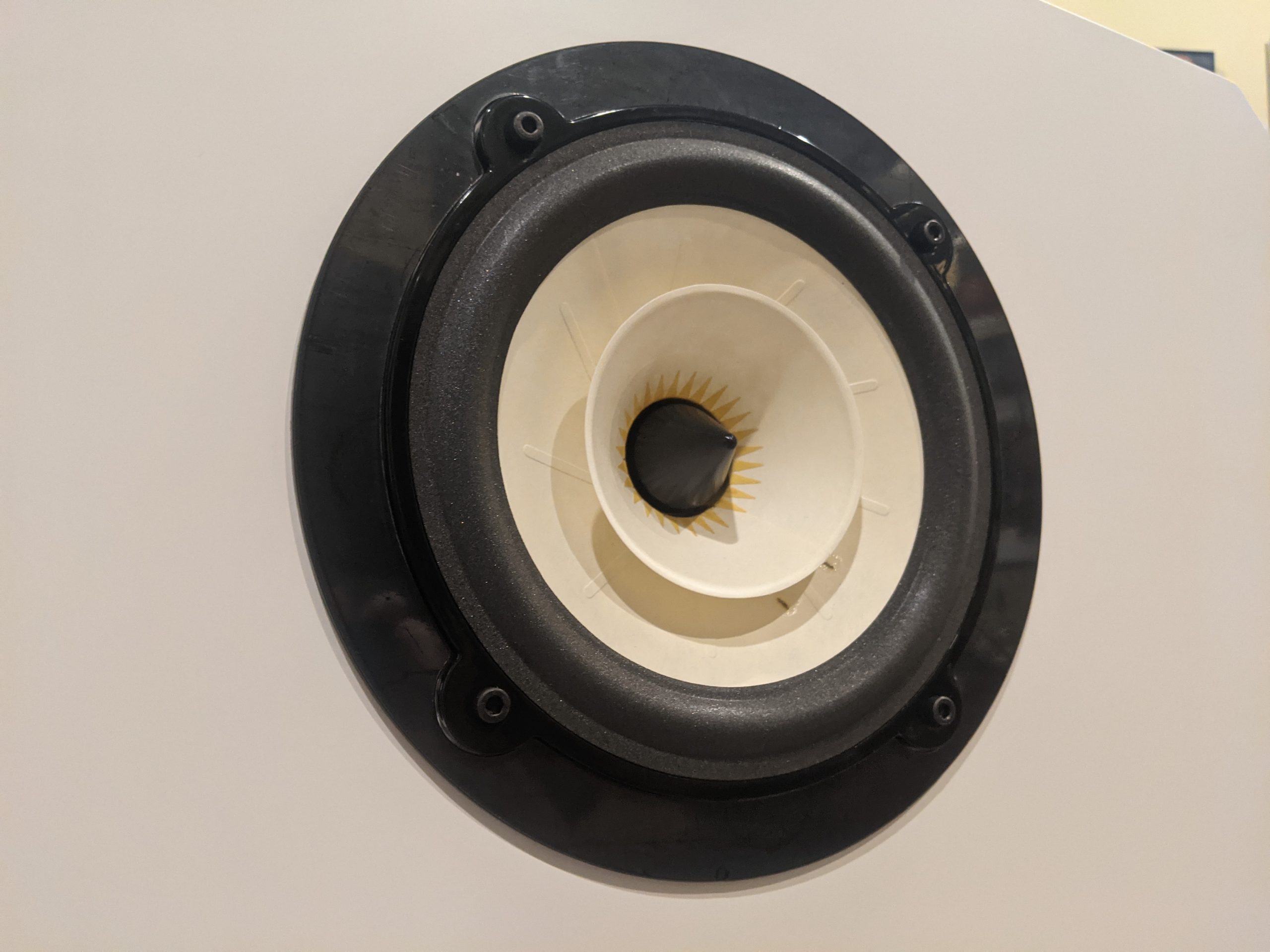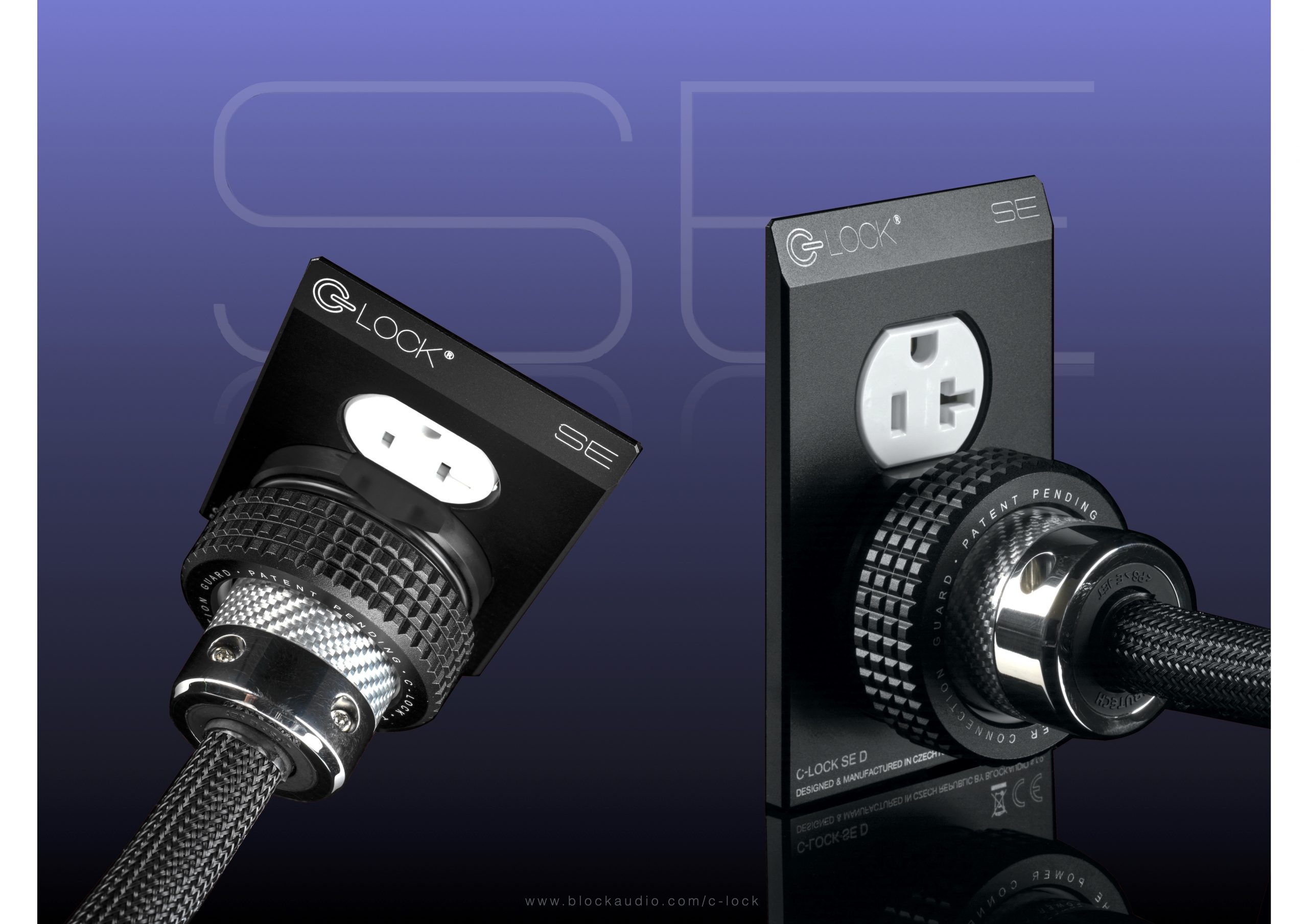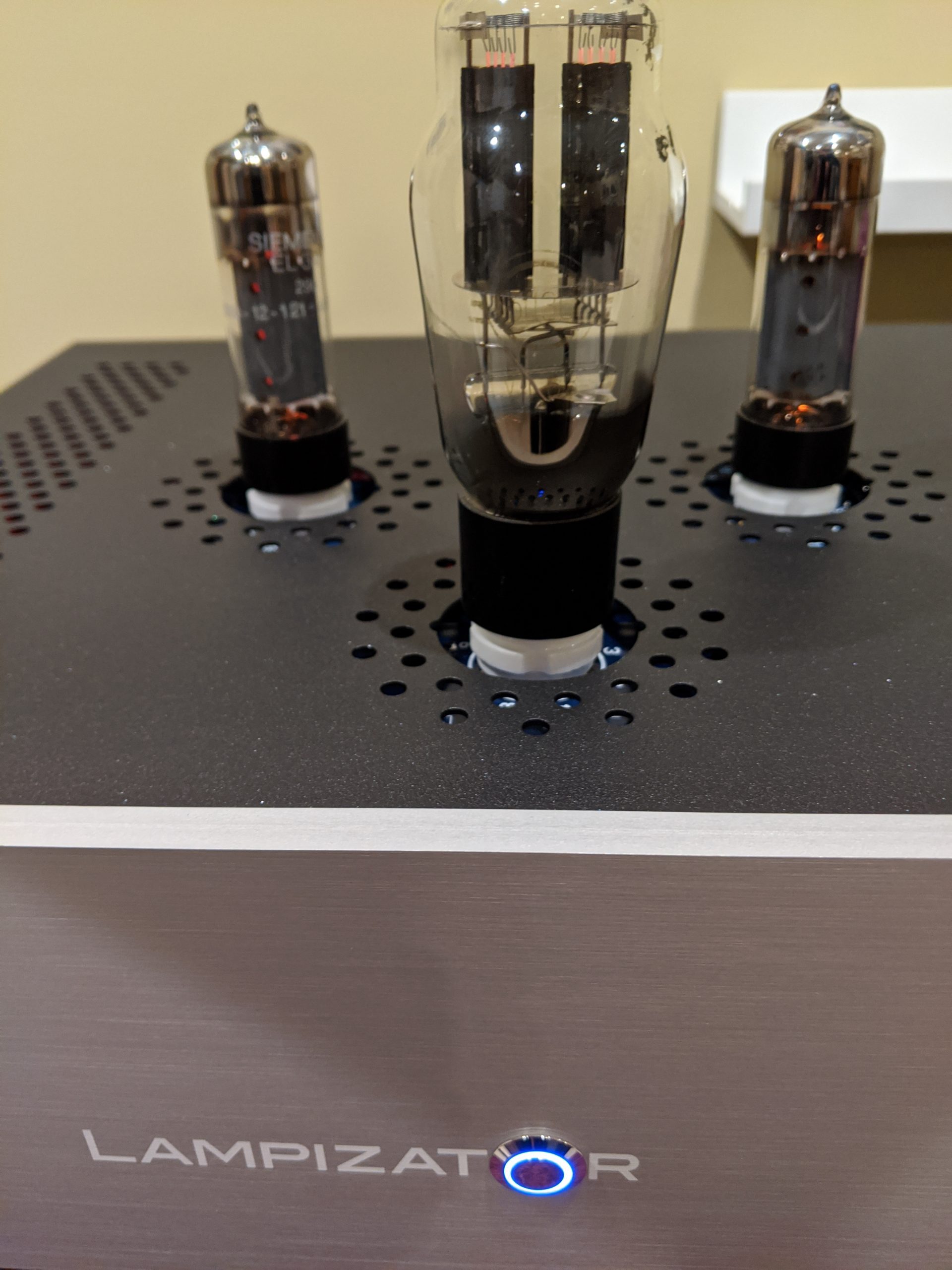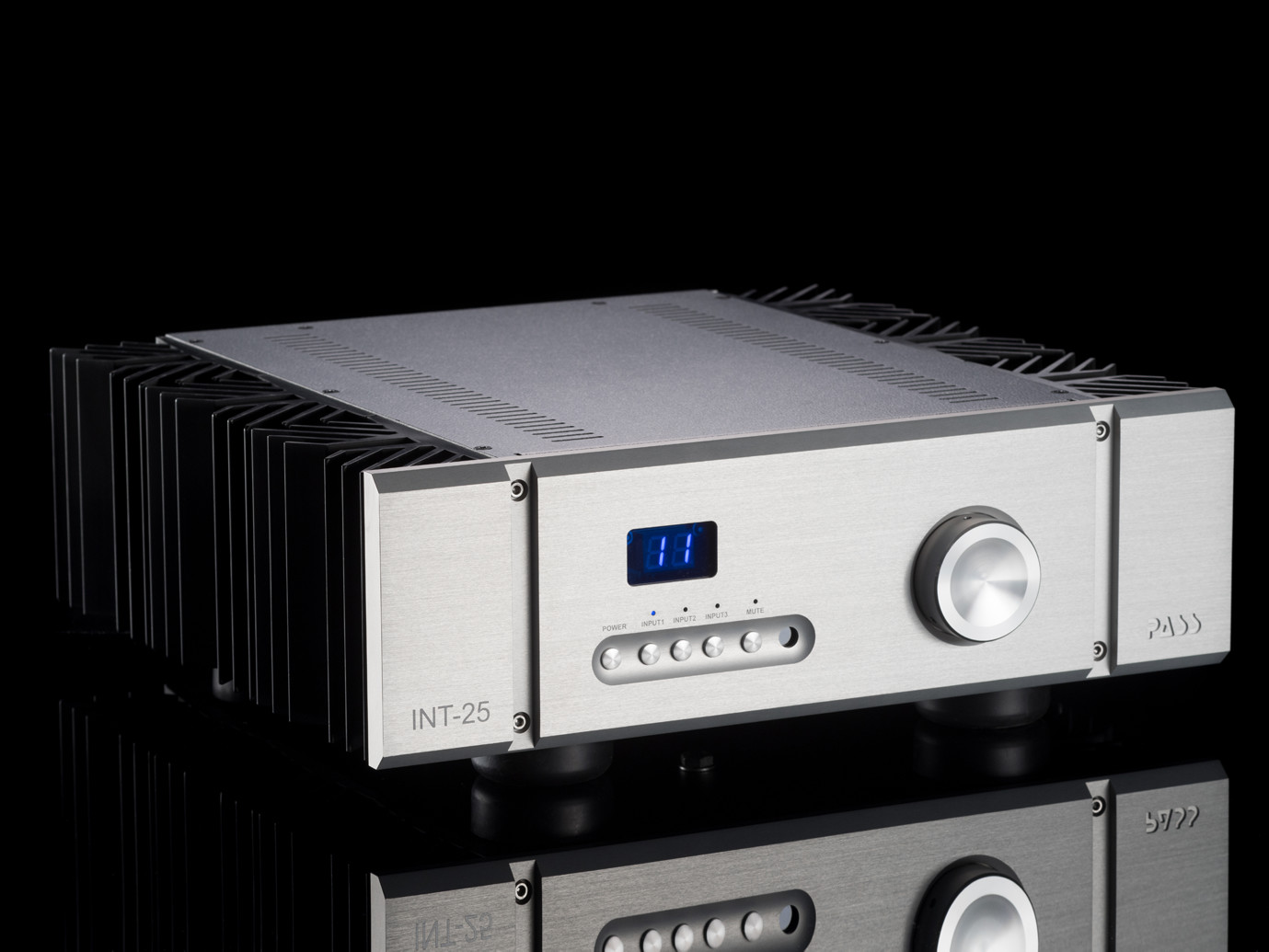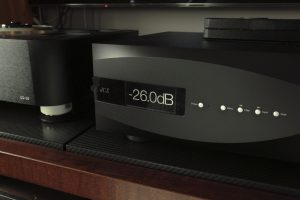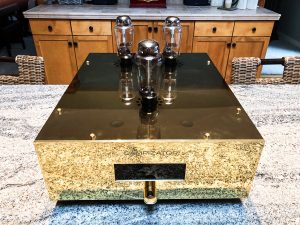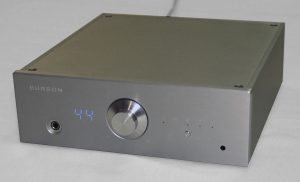
I admit it; I can be late to the party. The vast majority of gear I have written about is not new to serious audio buffs and some has had much previous press. There are two broad causes for this:
One: I am not "initials" famous. You can't utter "gb" and watch as everyone turns with cupped hand to hear what I have to say about audio, therefore and rightly so, I don't have manufacturers knocking down my door to send me their latest and greatest gear…Yet?
(Authors Note: I wrote this quite some time ago, well before the passing of the esteemed Harry Pearson, a.k.a. HP. I decided to leave it in, because that is what we narrators do. My sincerest condolences to the Pearson family...)
Two: I tend to pick and choose gear based upon my own desires, hi-fi sensibilities and because, God forbid, it interests me.
Those two reasons generally equal why gb (Yep, I like to be known in the lower case and discuss myself in the third person…I'm arrogant that way…Not!) writes essays about gear that has, more often than not, been in the marketplace for a while. And because I've written about so many mature products, I was justly pleased when Wyred 4 Sound agreed to send me the newly upgraded version of their flagship digital to analog converter; the DAC-2 DSDse. Unfortunately, it took me a very long time to write this—I had quite the case of writer's block and just couldn't get to the finish line. Mea Culpa…Thank you W4S, for bearing with me.
DAC Attack!
The DAC-2 DSDse boasts an impressive list of high-end parts and technical wiz-bang engineering; the resulting specifications and end-user capabilities are just as impressive. In its latest form, the DSDse has a secret weapon; an 82fSec Femto clock! The DAC-2 DSDse supports 32-bit 384 kHz PCM, DSD64 and DSD128 through its galvanically isolated Asynchronous USB 2.0 compliant input. With ASIO 2.2 drivers, 32-bit digital volume control, upgraded display, tons of inputs and outputs, remote control, upgradable circuit boards and a five-year warranty, the DSDse is quite a full-featured, and ostensibly, future-proof package. It has so many options it would take me all day to list them all. But again, the big newsflash is the Femto clock that now comes standard in the DSDse version and as an added low-cost option in the base DAC-2. This faster than Beep Beep clock helps keeps phase jitter to vanishingly low levels and phase noise to a minimum. Femto clocks were, for a time, the province of the costliest DACs on the planet. Now, it seems, the entry fee for this new technology has hit the magic point where forward thinking manufacturers like Wyred 4 Sound can incorporate it into products that almost any audiophile can afford with a bit of judicious saving.
Freaky Fast!
Jitter, of course, is one of the universally decried enemies of digital playback and much is made of a DAC's ability to keep jitter low. Timing errors when digitally reconstructing the analog wave form cause all kinds of distortion and noise. The internal clock in a digital component is responsible for keeping these timing errors to a minimum. Until recently, most DAC clocks operated in Picoseconds of precision. A Picosecond is an International System unit equal to one trillionth of a second; a snail's pace in comparison to the Femtosecond; which is one quadrillionth of a second! Get yo' jitter outta my digital music!
Currently, there is a bountiful digi-stew of DACs that feature the ESS Sabre D/A chipset for digital-to-analog conversion. Many ESS based DACs, like the DAC-2 DSDse, use the 9018 chip. Counting the W4S uDAC-HD that I wrote about in Issue 70, and the Mytek DSD-Stereo 192, which uses the 9016 version of the Sabre chip, the DAC-2 DSDse is the third ESS based product I've heard in my home. They've all been impressive; high resolution digital playback that is also musical is a very good thing. According to the W4S website, they use the 8 channel 9018 chip "…in quad differential mode meaning that there are actually 4 differential D-A conversion circuits for each channel in parallel. This helps achieve a spectacular S/N ratio and output drive capability."
Listening
I initially set up the DAC with the default roll-off and filter settings. I did play with them some, but found I liked the default best and left those settings for the majority of my listening. I used the DSDse's internal preamp and found it to sound very good. That said, the "Fixed" volume setting was my preferred—it just sounded better to me. Since my reason for selecting this DAC for audition was specifically to use it as a USB DAC with J River Media Center 19, I did not use its COAX or Toslink inputs, nor did I use the balanced inputs or outputs. Not having heard the DAC-2 in any of its forms, basic or otherwise, this was a totally new experience for me.
At the outset, prior to really warming up and settling in, I thought the DAC2 DSDse was smoothing over detail. With some burn-in and time getting to know the sound, I decided this was an incorrect assumption. Rather than obscuring detail, it seemed to me that perhaps the resolution of the DSDse was so good that it was constructing a little more of everything, effectively fooling me by giving me more music than I was used to hearing. The more I listened, the more I loved its open clarity and high resolution. It wasn't lush or strident, nor was it warm or cold; it was simply music streaming from the speakers. The DSDse's sound has lightness to it, yet is powerful and deep when the music demands it. Like its uDAC-HD sibling, the DSDse has excellent pace and drive. With the uDAC, I couldn't keep from tapping, strumming, drumming and generally feeling the rhythm and the same applies to the SE. There is a nice leading edge bite on instruments like electric guitars and saxophones. Percussion is distinct and impactful. All the various voices and instruments come together in a multi-layered soundfield that is sneaky good and extremely effective at recreating the musical event. This translates into a stage of unexpected width, depth and layering.
Celebrate the Difference!
These days, with so many incredible advances in technology, it seems that quality digital audio components sound far more alike than different. To this listener, it would seem Wyred 4 Sound has implemented their DACs with a preamp/output stage that is voiced with a particular sound in mind. When listening to a track like Peter Gabriel's "Sledgehammer", I noted the bass to be sinewy, almost stretchy—like a sonic taffy pull—yet the overall vibe was one of quickness combined with a smooth and lissome, finely detailed musical scene. It seems strange sometimes; such smoothness amid so much resolution. It is addictive. In comparison, the sound of the Mytek Stereo 192 DAC is more upfront and bold than the W4S, which in contrast is more delicate and refined, yet retains a serious belt-you-in-the-mouth punch when needed. This is not a ding against either DAC; it is instead acknowledgment that while digital componentry can sound very much the same at times, they all have at least some part of the recipe which is unique, sprinkling the designer's secret electronic spices about to provide a unique and tasty sonic character. This is undoubtedly true of these two fine DACs. I like them both, but the W4S DAC's sound is somewhat more sophisticated and offers better staging.
While getting a handle on the sonic differences of one DAC compared to another can be really tough, there was one repeatable attribute of W4S DAC that I could recreate time and time again: If I unplugged it for 5 minutes or so to swap in another component, without fail the DAC-2 DSDse sounded somewhat grainy and less accomplished until it had some time to warm itself back to an operational level. I have read a few comments online about the Femto clock needing to stay stable to sound its best, and by golly gum drops, I think it is true. That said, once I was done with a few comparisons, I rarely turned the DSDse off, making this finding a non-issue. To me, this discovery served notice this new clock technology does indeed have a major effect on the sound of a digital to analog converter.
At the same time that I was writing about the DAC-2DSDse, I was lucky enough to have a pair of Rogue Audio M-180 mono block amps in gb's Tune Saloon. The W4S DAC and the 180's were smitten with each other from the very beginning. As alluded to earlier, the DAC 2 DSDse can portray a huge and complex stage; unravelling instrumental textures and imbuing them with lovely tone and texture. I found it very easy to turn the music up louder than I would normally and get lost in the melody. The reality is, the DSDse, the Rogue amps and the rest of my system worked fabulously well together and I frequently had to tear myself away from listening. Whether the Rogue amps or my own 845 SET was in the system, the DAC-2DSDse Femto sounded wonderful when listening to any file type, whether MP3's, WAV's, Lossless Redbook, or high resolution files. And yes, it sounded magnificent on excellent DSD recordings.
Functioning Bits
Cosmetically, the DAC-2 DSDse echoes the W4S line: Utilitarian and dense, yet sized to allow for easy incorporation into a rack or elsewhere. It looks to be really well built and again, at least some of the parts used are arguably the best available. The display is small, but easy to read. Operationally, the DAC was rock solid. It did require a simple download of a driver to use with my PC computer, but there wasn't a single issue with Windows 7-64 and J River Media Center 19 software during the entire time of my audition. The Volume control was very good and I loved being able to adjust balance and phase via remote. But my favorite operative function was the ability to adjust the DAC's output voltage to allow for the most usable volume range with my gear. Ultimately, I liked it best with the volume output set on "Fixed" and the upper/lower limits set to 68/0 for a 2 volt output to my Audiotropic Moebius preamp. Bass response and dynamic contrast were much improved once this was correctly set.
Conclusion
It is a crowded market these days and there are a lot of excellent DACs for sale. I haven't heard them all, nor is it likely I ever will. So how does the Wyred 4 Sound stack up to what I have heard? Well, at its $2,549 price point, I would give it high marks indeed. The DAC-2 DSDse combines high-end sound and a boatload of useful features including the ability to seamlessly play nearly every file format available.
In digital hi-fi, the point of diminishing returns is real and oft times not far up the price scale. It would seem that Wyred 4 Sound has found the recipe for making great sounding, high value digital to analog converters. The Wyred 4 Sound DAC-2DSDse is more than just a really long name that is hard to write over and over and over. It is high-fidelity form and function. It has incredible staging, excellent pace, rhythm and timing and incorporation of a well-designed volume control with adjustable gain allows it to be used direct to your amplifier. The DAC-2 DSDse is a terrific deal for such a high level of musical technology. At the end of the day, it is all about what spice you love in your musical gumbo. The DAC-2 DSDse is an easy recommendation for your further investigation, you might find it a succulent morsel!
Gary L. Beard
WYRED 4 SOUND DAC-2 DSDse
Retail: $2549




